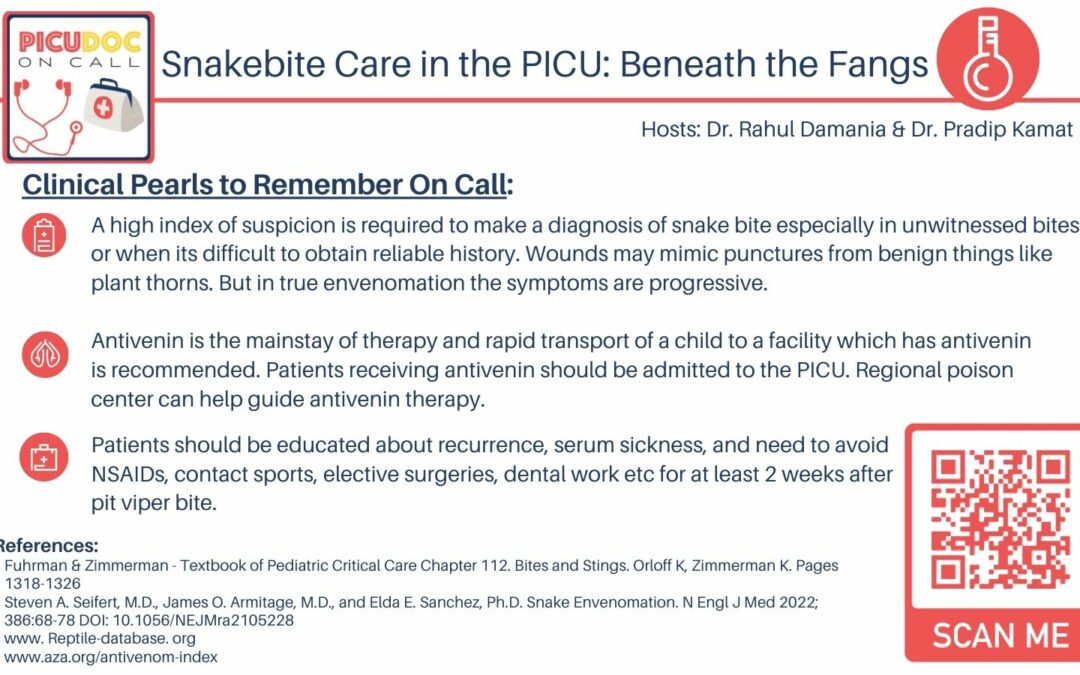In this episode of PICU Doc On Call, Dr. Pradip Kamat and Dr. Rahul Damania discuss a case of a 4-year-old girl with bite marks and swelling of her foot, presenting with concerning vital signs and abnormal labs. They explore snake envenomation and its management in the pediatric critical care setting.
Classifying Snake Envenomation
Snakes with venom-delivering fangs, primarily Elapidae and Viperidae, are responsible for most human envenomations and fatalities. We’re focusing on Pit Vipers today, including rattlesnakes, cottonmouths, and the copperhead. Elapids, such as the coral snake, differ by having round pupils, short fangs, and no facial pit.
Risk Factors for Pediatric Snakebites
Snakebite incidents can happen when toddlers unintentionally disturb snakes, particularly in low-light conditions or grassy areas. Teenagers trying to capture snakes are another frequent group presenting with upper extremity bites.
Pathophysiology of Snake Envenomation
Snake venoms contain toxic proteins that affect various physiological systems, leading to neurotoxic, hemotoxic, myotoxic, or cytotoxic effects. Envenomation can happen immediately or be delayed, presenting with various clinical and laboratory anomalies.
Syndromes Observed After Snake Envenomation
The impact of a snakebite depends on the snake type, fang size, and venom injection site. Effects may include cytotoxicity, lymphatic system damage, platelet dysfunction, neurotoxicity, cardiotoxicity, hypotension, and nephrotoxicity.
General Management Framework
In snakebite cases, prehospital care involves immediate EMS call and ensuring airway, breathing, and hemodynamic stability. In the hospital, general supportive care is crucial, and antivenin administration depends on clinical presentation and snake type.
Antivenin Considerations
Antivenin dosage is challenging due to unknown venom load, and its choice depends on safety, kinetics, cost, and the specific snake involved. Smaller fragments of antivenin have larger distribution volumes and shorter half-lives. Recurrence, anaphylaxis, and serum sickness are potential side effects of antivenin.
Clinical Pearls
- A high index of suspicion is required to diagnose snake envenomation.
- Antivenin is the mainstay of therapy, and rapid transport to a facility with antivenin is crucial.
- Patients should be educated about recurrence, serum sickness, and lifestyle adjustments after a pit viper bite.
Thank you for listening to this episode on snake envenomation in the PICU. For more episodes, visit our website picudoconcall.org. Stay tuned for our next episode! Don’t forget to share your feedback and subscribe to our podcast.

